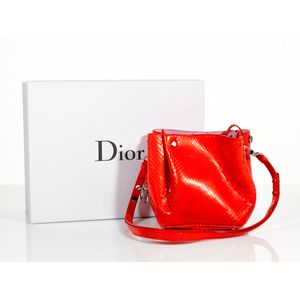Dutch Silver Crystal Salt Cellar, 19th Century
You must be a subscriber, and be logged in to view price and dealer details.
Subscribe Now to view actual auction price for this item
When you subscribe, you have the option of setting the currency in which to display prices to $Au, $US, $NZ or Stg.
- Scallop / Shell Motif - The shell motif has been used in furniture and decorative arts for centuries. In ancient Greece and Rome, shells were often used as decorative elements on furniture and in mosaics. The scallop or cockleshell are the most commonly used. During the Renaissance, the shell motif became popular in furniture and architecture, as the ornate decoration was seen as a symbol of wealth and luxury. In the 18th century, the Rococo style of furniture and decorative arts featured an abundance of shell motifs, and it was used by Thomas Chippendale and as a feature on Queen Anne style cabriole legs. In the 19th century, the shell motif was incorporated into Victorian furniture and decorative items, and often a representation of the the conch shell was inlaid into furniture.
- Date Letter on Silver - A date letter is a letter or symbol that is used to mark silver and other precious metals to indicate the year in which the piece was made. The date letter system is used by the British hallmarking system and it is a way to verify that a piece of silver is genuine and has been assayed (tested) by an official assay office.
The date letter system has been in use since the 14th century and it changes every year, so it is possible to identify the year in which a piece of silver was made by looking at the date letter. The date letter is usually stamped alongside other hallmarks such as the maker's mark, and the standard mark (indicating the fineness of the metal) on the silver piece. The style of the letters varies depending on the assay office, and the style of the lettering also changes over time. The date letter is usually placed inside a shield shape, sometimes accompanied by other symbols.
The date letter system is not used in all countries, so if a piece of silver does not have a date letter, it does not necessarily mean it is not authentic. The date letter system is not always used for small or insignificant silver items. - Anthemion - An anthemion is a classical decorative design element based on the acanthus flower that consists of a central circular or oval motif surrounded by radiating petals or leaves. It is often used as a border or frieze in architecture, furniture, and other decorative arts. The anthemion is derived from the palmette, a motif that was popular in ancient Greek and Roman art and architecture. It is often associated with the classical world and with Neoclassical style, and it is often used to add a sense of grandeur and formality to a design. The anthemion is also known as a honeysuckle or honeysuckle ornament. It continues to be used in a variety of contexts today, and it is often admired for its elegant and decorative qualities.
This item has been included into following indexes:
Visually similar items

Christian Dior, limited edition 'Diorific' Mini bucket bag, Summer collection 2014, tangerine snakeskin, removable shoulder strap, silver tone hardware, 'Dior' clochette charm, contrast lilac leather lining, pocket mirror, engraved 'Christian Dior, Paris,

A Victorian rectangular gilt wood over-mantel mirror, 90 x 75 cm

A fine and rare set of four large Louis IV provincial walnut fauteuils open armchairs, circa 1700, each with shaped flat back over scrolling arms over shaped seat rail on cabriole legs joined by x-shaped stretcher, upholstered in yellow suede fabric, each

Chalice / goblet. By silversmiths Samuel Hayne and Dudley Cater Presented to Mr Andrew Torning sterling silver London 1856, circa 1857. Height 20.5 cm
